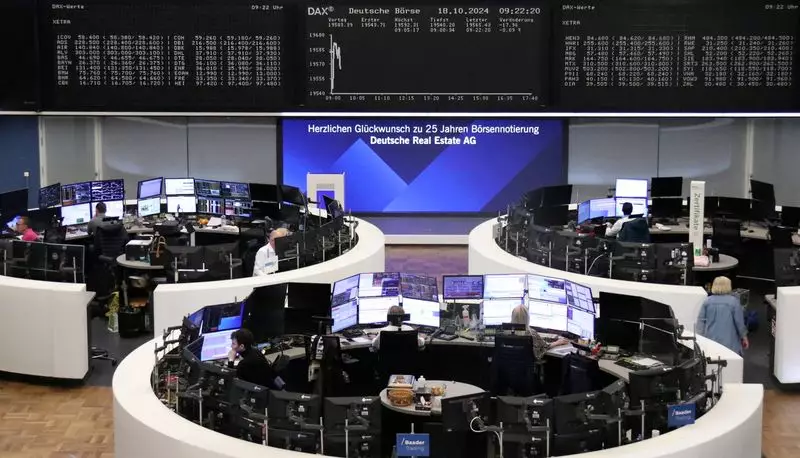European markets experienced a notable upswing on Friday, with the STOXX 600 index closing 0.2% higher, thanks largely to a robust performance from the technology sector. This rebound came at the end of a tumultuous week for investors, reflecting a broader sentiment of recovery aided by the European Central Bank’s recent decisions to cut interest rates. The technology sector rebounded impressively, registering a 2% increase, which was critical in easing the weekly losses of the tech index, now reduced to 6%. However, it’s essential to highlight that this sector remains the weakest performer of the week following a disappointing sales forecast issued by ASML, a prominent player in the semiconductor industry.
The situation in the tech market has evidently clouded the performance of chip manufacturers globally. Despite ASML’s struggles, shares of the company managed to rise by 1% on Friday, alongside other firms like Soitec SA and BE Semiconductor Industries, which saw gains of 5.6% and 2.8%, respectively. On another front, commodity-related stocks, particularly in basic resources, enjoyed a 1.4% surge bolstered by burgeoning copper prices.
Additionally, the luxury goods sector saw a revival as well, with a 1.1% rise in luxury stocks after enduring a sell-off earlier in the week following LVMH’s underwhelming third-quarter results. Notably, major luxury brands such as Kering, the parent company of Gucci, and Hermes recorded substantial upticks of 3.5% and 1% respectively, contributing positively to France’s CAC 40 index, which advanced by 0.4%. Furthermore, Brunello Cucinelli’s impressive nine-month revenue figures resulted in a 2.6% increase, highlighting the sector’s resilience.
Conversely, the broader economic landscape remains a cause for concern. Recently, Goldman Sachs amended its forecast for the STOXX 600 index’s earnings growth for 2024, slashing it to 2% from an earlier estimate of 6%. The brokerage cited a cocktail of challenges, including anticipated increases in corporate taxes and the looming threat of trade tariffs as driving factors behind this adjustment.
The European Central Bank’s decision to cut interest rates to 3.25% has played a pivotal role in shaping the current market climate. Reports indicate that further cuts are on the horizon, with a potential fourth reduction in December if forthcoming data presents unfavorable trends. For many analysts, including Daniel Murray of EFGAM, the risks associated with the European economy are markedly higher compared to the U.S., pointing to a sluggish trend in economic growth paired with heightened exposure to potential market shocks.
Individual stock performances have also showcased the varying fortunes within sectors. For instance, Elisa, a Finnish telecommunications company, saw its shares plummet by 4.7% after its third-quarter revenue failed to meet market expectations. Similarly, Sweden’s Getinge, which specializes in medical equipment, witnessed a 5% drop in stock value due to disappointing core earnings figures. Such movements underscore ongoing volatility within specific sectors, prompting investors to remain vigilant and adaptive in an unpredictable market environment.
While Friday’s market performance provided a glimmer of hope for European investors, underlying concerns about economic stability and sector-specific risks continue to cast a shadow over the market outlook. The interplay between monetary policy adjustments and corporate performance will be instrumental as Europe navigates through uncertain economic waters.

